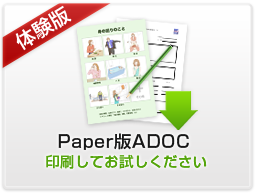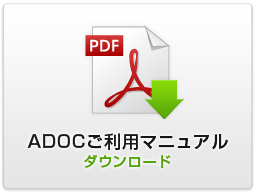English
What is ADOC (Aid for Decision-making in Occupation Choice) ?
ADOC is an application for the iPad. It involves 95 illustrations which describes daily activities related to “activities and participation” in the International Classification of Human Functioning, Disability, and Health (ICF) chapters (WHO, 2001). By choosing illustrations, clients and occupational therapists could decide their goals and the prioritization of occupations that affect occupational therapy interventions. Moreover, ADOC can measure satisfaction of implementation status on each chosen occupation.
Process of ADOC
In order to share “decision making in occupation” based goal with clients and occupational therapists, the procedure of ADOC was classified roughly into 3 large steps. On the each step, short captions appear on the iPad screen as needed.
In the first step, individual client login to the ADOC application with username and password, and client information such as name, age, sex, and main diagnosis to be input too.
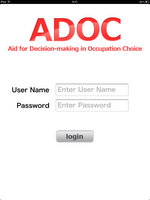

In the second step, “Occupation choice and satisfaction measurement” is undertaken in six steps:
Client could select up to 20 important occupations. A short caption appears as follows: “Client can choose an important occupation. Those occupations to be rated using the following categories: 1. You want to be able to do this. 2. You want to do this now. 3. You would have trouble doing this. 4. You are worried about doing this. 5. You need to do this.” If important occupations are not listed, clients can add new ones.

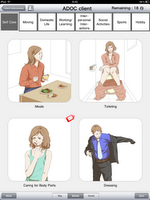

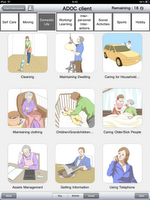
The client is asked to rate the importance of each of those occupations on 4-point scale (1. Very important, 2. Important, 3. Not important, 4. Very unimportant). A short caption appears that mentions “Decide on the degree of importance of the occupation.”

Next, occupational therapist selects important occupations for the client in the same way. A short caption appears as follows: “Therapist can choose important occupations for the client. Therapist can choose occupations as needed, even if the client has not chosen it.” If important occupations for the client are not listed, occupational therapist can add them.
While the illustrations selected by the client and the therapist are displayed, the client and therapist together make decision up to 5 urgent and important occupations. A short caption appears as follows: “Choose up to five occupations practiced in therapy”
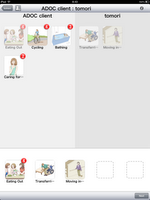
Using an importance-urgency matrix, the client and the occupational therapist decide on the priority of occupations. A short caption appears as follows: “Considering the balance of importance-urgency, decide on the priority of occupations practiced in occupational therapy. Talk to the therapist for help. Urgency means that it is better to do earlier. However, consider the balance with importance.” If this is difficult or not to needed, they can move on to the next step.
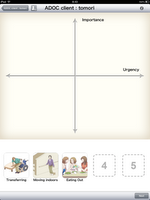
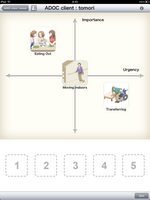
The client is asked to rate his or her satisfaction of implementation status for each chosen occupation using scale of 1-5. And then, the client information, the selected occupation, and the satisfaction score are saved automatically and also saved at each step.

The third step, “Documentation”, has four parts as follows:
The occupational therapist (and client) brings up the client data and input intervention plans about each occupation-based goal on the iPad.

Datas are saved in PDF (Portable Document Format, Adobe) format.
The occupational therapist can print out the document and data, and explain them to the client.
Although we distributed an English version of ADOC, study of cross-cultural validity is needed each time another country translates the items and illustrations for use locally. It is hoped that occupational therapy researchers in various countries will investigate its cross-cultural validity in order to promote the implementation of shared decision-making in occupation-based goal-setting by many clients and occupational therapists.




